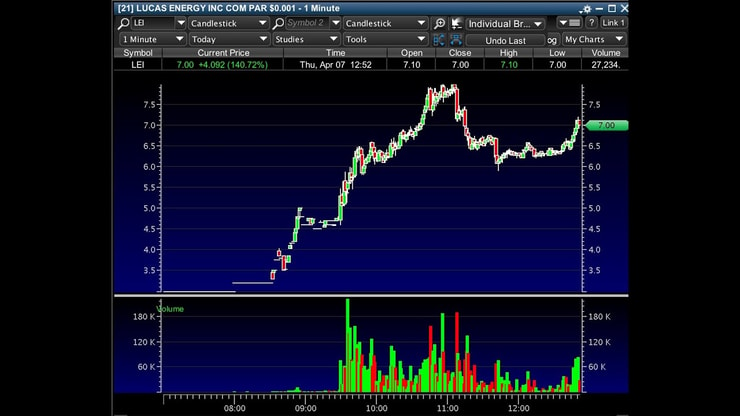In May of 2015 I wrote a blog post called “117 Stock Trading Rules That Made Me 117% In 117 Days”
Today is the 110th day of the 2016 and I have to say, oops, I did it again as this small account I’m trading in 2016 is now up 110% to start the year after a VERY solid trade I made today outlined in this video lesson:
My $12,000 account is now $25,383 (it’s actually a gain of 111.5%, but I’ll round down just to make it simple sounding that I’m up 110% in 110 days)
Here’s the trade I absolutely nailed from start to finish (it doesn’t always happen this perfectly, but sometimes it does which is a great feeling!)
Many of my students nailed it too**, and some even did better than me, profiting nicely on 2 similar plays too:
Now I know what you must be thinking: this is a crazy coincidence or luck or fraud…right?
It’s none of the above, it’s just the result of a successful trading strategy implemented again and again and again and again…year after year after year after year after year…
It doesn’t matter if my account grew 117% in 117 days or 110% in 110 days, even if I was up 50% in 100 days or heck even 10-20%, I’d still be crushing every major stock market index and 99.9% of hedge funds and mutual funds.
More Breaking News
- ROAD Stock Soars After Recent Cautious Optimism: Is This the Moment to Jump In?
- Tevogen Bio: Is the Recent Leap Indicative of Investment Promise?
- Is Now the Moment to Seize Tutor Perini’s Surging Stock?
I know it sounds impossible, but it’s not as many of my top millionaire trading challenge students are proving on top of my own success**; what I teach is a strategy that helps you understand that a small account is NOT a disadvantage, it’s actually a great advantage because you can take on very high odds trades and exit very quickly.
For instance, when a penny stock spikes for the wrong reasons as I tweeted earlier today:
Watch, here’s how to short sell a penny stock with inaccurate news https://t.co/t0vJEJI3VG study up $FB $TWTR peeps!
— Timothy Sykes (@timothysykes) April 19, 2016
Now, no matter your small account, you’re not guaranteed to make a profit every time, I’ve NEVER met a legitimate trader who wins more than 65-75% of the time, all those 90-95-100% of the time winning traders are full of BS, hence why they will make endless excuses as to why they can’t simply show ALL their trades publicly like my top millionaire trading challenge students do HERE and HERE and HERE and I do HERE too**.
Look at our winning % and you will NEVER see absolute perfection, it doesn’t exist in trading, especially in penny stock trading…but as you can see from sooooooooooooooo many wild days already in 2016, there are soooooooooooooooooo many opportunities, both long and short, if you know how to piggyback a spike already in progress like I did with GRNH (and many other students successfully did BETTER than me riding the momentum in plays like TRTC, EBIO, SEED and now UNXL too) or short sell a pump that is collapsing, as MRJT proved nicely today (and which I totally missed due to too many other plays)
If you don’t believe me, or think my education is too expensive or any number of other excuses I hear people make as to why they don’t study and profit, well then that’s your loss…truly…I don’t have a problem finding hot stocks to trade, the toughest challenge in my business is finding dedicated trading challenge students because while everyone wants to be rich, very few people are willing to actually put in the time & effort that it takes to get there.
Remember, I now have 500+ FREE video lessons HERE and this FREE webinar I gave the other day is a must watch…below are some recent example of the crazy days we’ve had and how many successful students I have that have been learning a few hundred dollars or a few thousand dollars/day in profits keeps the real job away :)**




Leave a reply